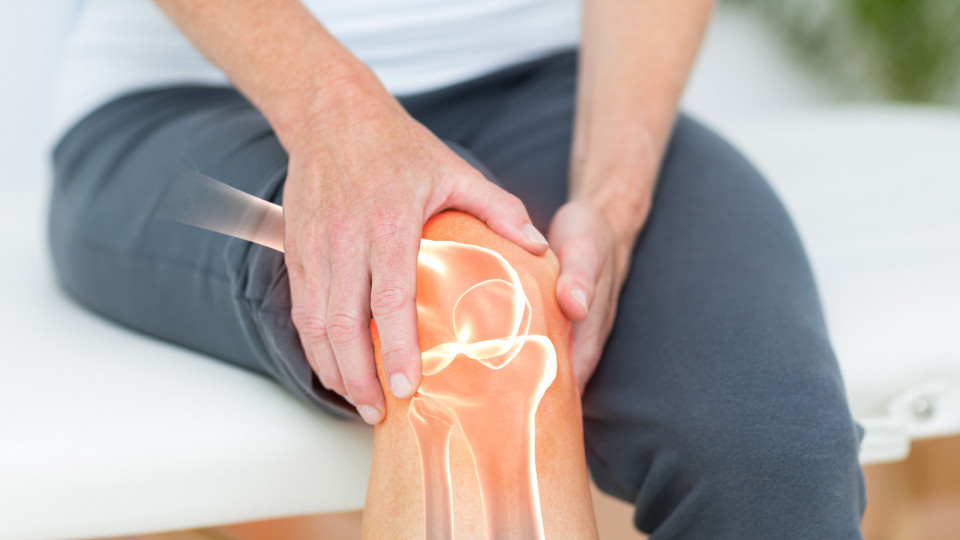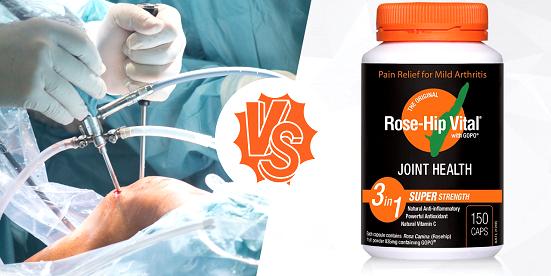Understanding Common Joint Conditions

Introduction
In the realm of musculoskeletal health, joint conditions can significantly impact daily life, from causing pain and discomfort to limiting mobility and function. Understanding the various types of joint conditions, their symptoms, causes, diagnostic methods, and management strategies is crucial for individuals experiencing these issues and those seeking to support them. In this guide, we delve into the main principles of several common joint conditions, ranging from arthritis and osteoarthritis to sports injuries and fibromyalgia. By gaining insights into these conditions, readers can empower themselves with knowledge to navigate their healthcare journey effectively.
Arthritis
Overview
Arthritis is a broad term referring to inflammation of one or more joints. It can cause pain, stiffness, swelling, and decreased range of motion. There are different types of arthritis, including osteoarthritis and rheumatoid arthritis, each with its own causes and symptoms.
Symptoms & Causes
Symptoms include joint pain, stiffness, swelling, and decreased range of motion. Causes vary depending on the type of arthritis but may include autoimmune factors, genetic predisposition, injury, infection, or wear and tear on the joints.
Diagnosis & Tests
Diagnosis involves a physical examination, medical history review, and often imaging tests such as X-rays or MRIs. Blood tests may also be done to check for specific markers of inflammation or autoimmune activity.
Management & Treatment
Treatment aims to relieve symptoms, slow down joint damage, and improve quality of life. This may include medications (such as pain relievers, anti-inflammatories, or disease-modifying drugs), physical therapy, lifestyle changes, and in severe cases, surgery.
Prevention
Preventive measures include maintaining a healthy weight, staying physically active, protecting joints from injury, and seeking prompt medical attention for joint pain or swelling.
Osteoarthritis
Overview
Osteoarthritis is the most common type of arthritis and occurs when the protective cartilage that cushions the ends of your bones wears down over time.
Symptoms & Causes
Symptoms include joint pain, stiffness, tenderness, and decreased flexibility. Causes may include aging, joint injury, obesity, overuse of joints, and genetic factors.
Diagnosis & Tests
Diagnosis involves a physical examination, medical history review, and imaging tests like X-rays or MRIs to assess joint damage and rule out other conditions.
Management & Treatment
Treatment focuses on relieving symptoms and improving joint function. This may involve medications (such as acetaminophen, nonsteroidal anti-inflammatory drugs, or corticosteroid injections), physical therapy, assistive devices, and lifestyle modifications.
Prevention
Preventive measures include maintaining a healthy weight, staying physically active, avoiding joint injuries, and protecting joints during activities.
Rheumatoid Arthritis
Overview
Rheumatoid arthritis is an autoimmune disorder where the immune system attacks the synovium (lining) of the joints, leading to inflammation, pain, and joint damage.
Symptoms & Causes
Symptoms include joint pain, stiffness, swelling, fatigue, and systemic symptoms like fever or weight loss. The exact cause is unknown but involves a combination of genetic, environmental, and hormonal factors.
Diagnosis & Tests
Diagnosis involves a physical examination, medical history review, blood tests (to detect specific antibodies like rheumatoid factor or anti-cyclic citrullinated peptide), and imaging tests (like X-rays or ultrasounds).
Management & Treatment
Treatment aims to reduce inflammation, relieve symptoms, and slow down joint damage. This may include medications (such as disease-modifying antirheumatic drugs, biologic agents, or corticosteroids), physical therapy, and lifestyle changes.
Prevention
While the exact prevention of rheumatoid arthritis is not known, early diagnosis & Treatment can help prevent joint damage and improve outcomes.
Psoriatic Arthritis
Overview
Psoriatic arthritis is a type of inflammatory arthritis that occurs in some people with psoriasis, an autoimmune skin condition characterized by red, patchy skin with silvery scales.
Symptoms & Causes
Symptoms include joint pain, swelling, stiffness, and skin lesions typical of psoriasis. The exact cause is unknown but involves a combination of genetic, immune, and environmental factors.
Diagnosis & Tests
Diagnosis involves a physical examination, medical history review, blood tests, and imaging tests to assess joint and skin involvement.
Management & Treatment
Treatment aims to reduce inflammation, control symptoms, and prevent joint damage. This may include medications (such as nonsteroidal anti-inflammatory drugs, disease-modifying antirheumatic drugs, or biologic agents), physical therapy, and lifestyle modifications.
Prevention
Preventive measures include managing psoriasis symptoms effectively, seeking early treatment for joint symptoms, and maintaining a healthy lifestyle.
Polymyalgia Rheumatica
Overview
Polymyalgia rheumatica is an inflammatory disorder that causes muscle pain and stiffness, typically in the shoulders, neck, hips, and thighs.
Symptoms & Causes
Symptoms include muscle pain and stiffness, particularly in the morning or after periods of inactivity, fatigue, and fever. The exact cause is unknown, but it's believed to involve immune system dysfunction.
Diagnosis & Tests
Diagnosis involves a physical examination, medical history review, blood tests (such as erythrocyte sedimentation rate and C-reactive protein), and sometimes imaging tests to rule out other conditions.
Management & Treatment
Treatment typically involves medications such as corticosteroids to reduce inflammation and relieve symptoms. Physical therapy and lifestyle modifications may also help manage symptoms.
Prevention
There are no specific preventive measures for polymyalgia rheumatica, but managing inflammation and maintaining a healthy lifestyle may help reduce the risk of complications.
Gout
Overview
Gout is a form of inflammatory arthritis caused by the buildup of uric acid crystals in the joints, leading to sudden and severe pain, swelling, and redness.
Symptoms & Causes
Symptoms include sudden attacks of joint pain, particularly in the big toe, along with swelling, redness, and warmth. Causes involve an excess of uric acid in the bloodstream, which can result from dietary factors, genetics, certain medications, or medical conditions.
Diagnosis & Tests
Diagnosis involves a physical examination, medical history review, blood tests (to measure uric acid levels), and joint fluid analysis (to detect uric acid crystals).
Management & Treatment
Treatment aims to relieve pain, reduce inflammation, and lower uric acid levels. This may include medications (such as nonsteroidal anti-inflammatory drugs, colchicine, or urate-lowering drugs), lifestyle changes (such as dietary modifications and weight loss), and managing underlying medical conditions.
Prevention
Preventive measures include maintaining a healthy weight, avoiding purine-rich foods (such as organ meats and shellfish), limiting alcohol consumption, staying hydrated, and managing underlying medical conditions.
Ankylosing Spondylitis
Overview
Ankylosing spondylitis is a type of inflammatory arthritis primarily affecting the spine, causing pain, stiffness, and eventually fusion of the vertebrae.
Symptoms & Causes
Symptoms include lower back pain and stiffness, which may worsen with rest and improve with activity. The exact cause is unknown, but it's believed to involve genetic and environmental factors.
Diagnosis & Tests
Diagnosis involves a physical examination, medical history review, imaging tests (such as X-rays or MRIs), blood tests, and sometimes genetic testing to detect the presence of specific markers.
Management & Treatment
Treatment aims to relieve symptoms, improve function, and delay disease progression. This may include medications (such as nonsteroidal anti-inflammatory drugs, disease-modifying antirheumatic drugs, or biologic agents), physical therapy, and exercise.
Prevention
There are no specific preventive measures for ankylosing spondylitis, but early diagnosis & Treatment can help manage symptoms and prevent complications.
Fibromyalgia
Overview
Fibromyalgia is a chronic pain condition characterized by widespread musculoskeletal pain, fatigue, sleep disturbances, and cognitive difficulties.
Symptoms & Causes
Symptoms include chronic, widespread pain, fatigue, sleep disturbances, cognitive difficulties (often referred to as "fibro fog"), headaches, irritable bowel syndrome, and mood disorders. The exact cause is unknown, but it's believed to involve abnormalities in how the brain and spinal cord process pain signals.
Diagnosis & Tests
Diagnosis involves a physical examination, medical history review, and exclusion of other conditions with similar symptoms. There are no specific diagnostic tests for fibromyalgia, but blood tests and imaging studies may be done to rule out other conditions.
Management & Treatment
Treatment aims to alleviate symptoms and improve quality of life, as there is no cure for fibromyalgia. This may include medications (such as pain relievers, antidepressants, or anti-seizure drugs), physical therapy, exercise, stress management techniques, and lifestyle modifications.
Prevention
Since the cause of fibromyalgia is unknown, prevention strategies primarily focus on managing symptoms and minimizing risk factors, such as maintaining a healthy lifestyle, managing stress, getting adequate sleep, and seeking prompt treatment for any new symptoms or worsening of existing symptoms.
Sciatica
Overview
Sciatica refers to pain that radiates along the path of the sciatic nerve, which branches from the lower back through the hips and buttocks and down each leg.
Symptoms & Causes
Symptoms include sharp, shooting pain, tingling, numbness, or weakness that radiates from the lower back through the buttocks and down the leg (often on one side). Causes may include herniated discs, spinal stenosis, degenerative disc disease, piriformis syndrome, or injury.
Diagnosis & Tests
Diagnosis involves a physical examination, medical history review, and possibly imaging tests such as X-rays, MRI, or CT scans to identify the underlying cause of sciatic nerve compression.
Management & Treatment
Treatment aims to relieve pain, reduce inflammation, and address the underlying cause. This may include medications (such as nonsteroidal anti-inflammatory drugs, muscle relaxants, or corticosteroids), physical therapy, chiropractic care, acupuncture, heat or ice therapy, and in severe cases, surgery.
Prevention
Preventive measures include maintaining good posture, practicing proper lifting techniques, staying active and exercising regularly (especially exercises that strengthen the core and support the spine), avoiding prolonged sitting or standing, and using ergonomic furniture and equipment to minimize strain on the lower back and pelvis.
Joint Knee Pain Mobility
Overview
Joint knee pain and mobility issues can arise from various causes, including injury, overuse, arthritis, or structural problems within the knee joint.
Symptoms & Causes
Symptoms include pain, swelling, stiffness, weakness, and difficulty moving the knee joint. Causes may include ligament or meniscus tears, osteoarthritis, rheumatoid arthritis, bursitis, tendonitis, or patellar tracking disorder.
Diagnosis & Tests
Diagnosis involves a physical examination, medical history review, and imaging tests such as X-rays, MRIs, or CT scans to assess the structure of the knee joint and identify any abnormalities.
Management & Treatment
Treatment depends on the underlying cause but may include rest, ice, compression, elevation (RICE), pain relief medications, physical therapy, braces or splints, corticosteroid injections, and in severe cases, surgery (such as arthroscopy, knee replacement, or ligament repair).
Prevention
Preventive measures include maintaining a healthy weight, avoiding activities that put excessive stress on the knees, warming up before exercise, wearing proper footwear, using correct techniques during physical activities, and addressing any knee pain or discomfort promptly.
Sports and Fitness Injuries
Overview
Sports and fitness injuries can affect various joints and tissues, resulting from overuse, trauma, improper technique, or inadequate conditioning.
Symptoms & Causes
Symptoms depend on the type and severity of the injury but may include pain, swelling, stiffness, weakness, instability, and limited range of motion. Causes vary widely and can include sprains, strains, fractures, dislocations, tendon or ligament tears, and repetitive stress injuries.
Diagnosis & Tests
Diagnosis involves a physical examination, medical history review, and possibly imaging tests such as X-rays, MRIs, or ultrasound to assess the extent of the injury and identify any structural damage.
Management & Treatment
Treatment depends on the specific injury but may include rest, ice, compression, elevation (RICE), pain relief medications, physical therapy, bracing or splinting, corticosteroid injections, and in severe cases, surgery for repair or reconstruction.
Prevention
Preventive measures include proper warm-up and cool-down routines, using appropriate protective gear, following safe and proper techniques during physical activities, gradually increasing intensity and duration of exercise, cross-training to prevent overuse injuries, and listening to your body's signals to avoid pushing beyond limits.
Conclusion
Navigating joint conditions can present significant challenges, but armed with knowledge about their characteristics, causes, diagnostic approaches, and management options, individuals can take proactive steps towards better musculoskeletal health. Whether it's implementing preventive measures, seeking early diagnosis & Treatment, or adopting lifestyle modifications, the journey to managing joint conditions is multifaceted and unique to each individual. By staying informed and collaborating with healthcare professionals, individuals can optimize their quality of life and promote long-term well-being in the face of joint-related challenges.
DISCLAIMER
The content on this page is meant for informational purposes only and should not be considered as a substitute for professional medical advice or consultation. It is not intended to provide comprehensive medical guidance.


